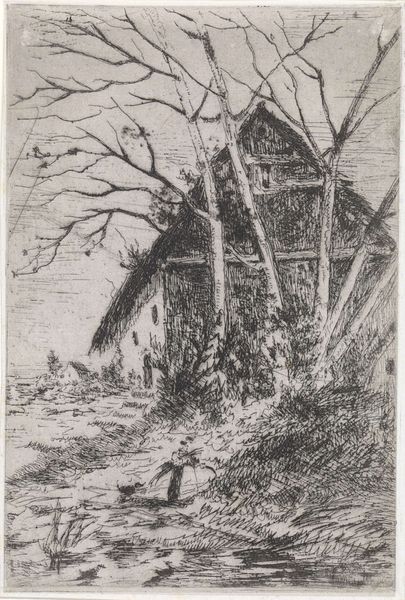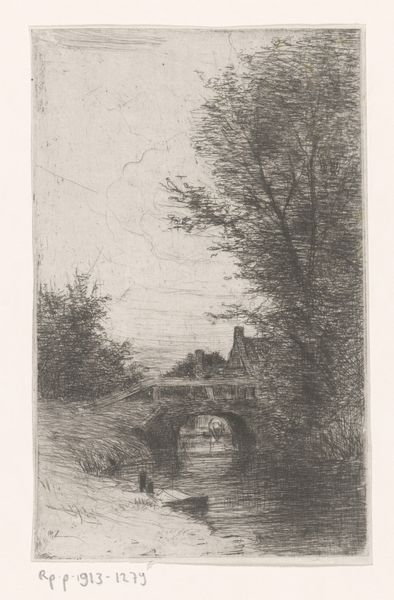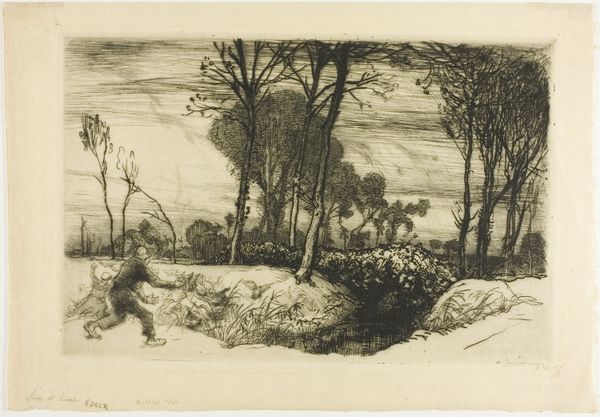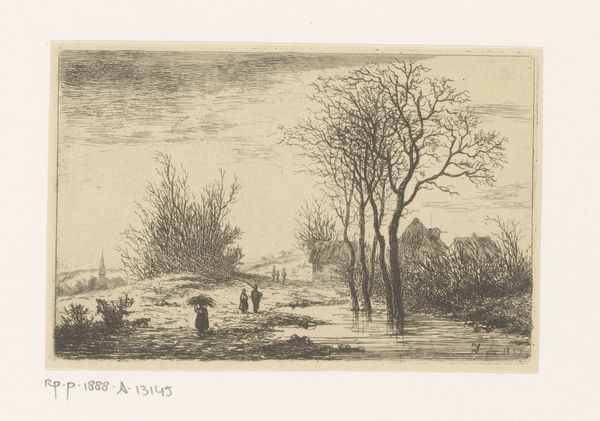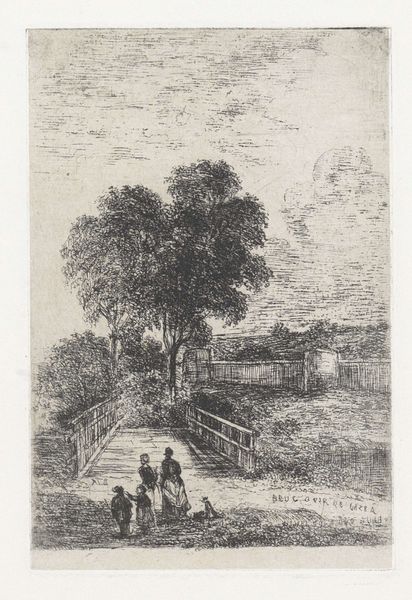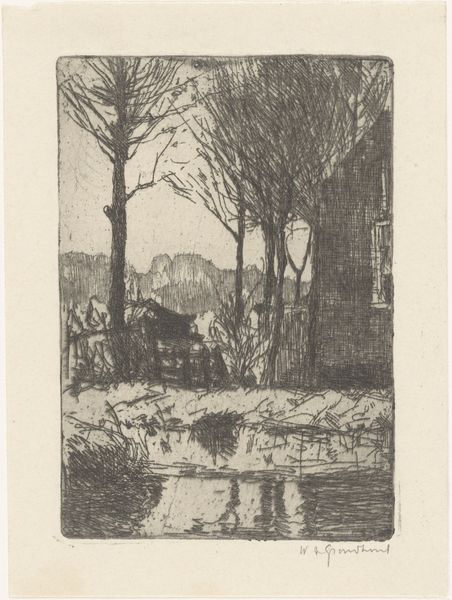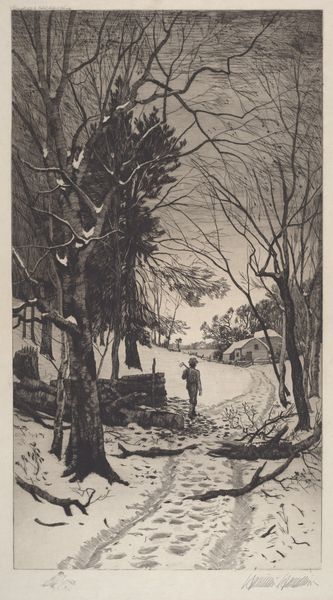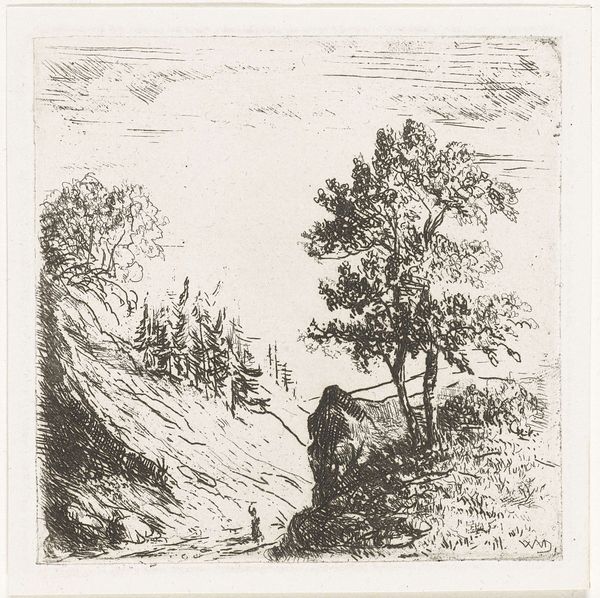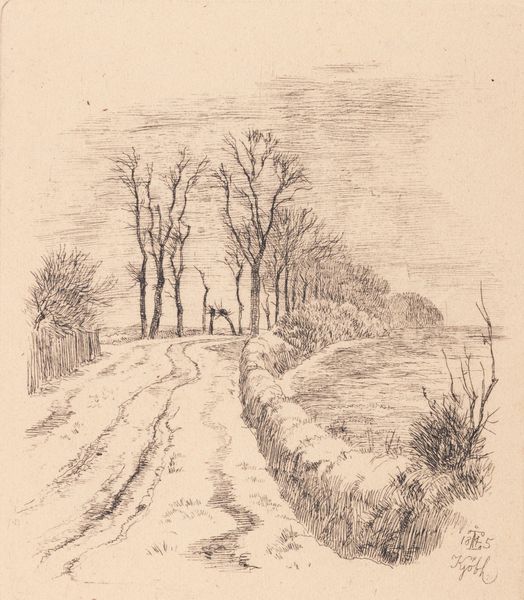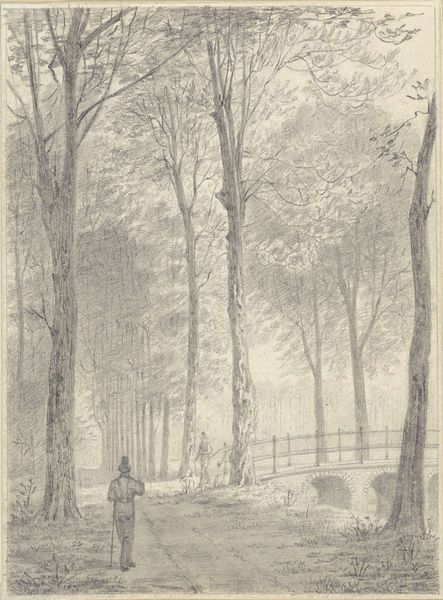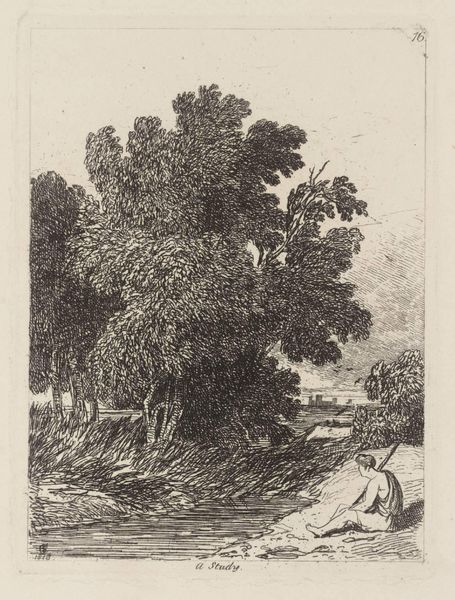
print, etching, engraving
# print
#
pen sketch
#
etching
#
old engraving style
#
landscape
#
figuration
#
line
#
engraving
#
realism
Dimensions: height 155 mm, width 98 mm
Copyright: Rijks Museum: Open Domain
Editor: This is "Landschap met een man op een weg," or "Landscape with a man on a road," by Elias Stark, created in 1886. It's an etching. The landscape looks quite stark; the lines create a scene with very little relief, almost ghostly. What jumps out to you? Curator: Immediately, I am drawn to the masterful manipulation of line. Observe how the artist employs hatching and cross-hatching to delineate form and generate a tonal range. Consider the skeletal trees: how their intricate network of branches dominates the upper register of the composition and acts as a counterpoint to the figure in the foreground. Do you see how this creates a tension, a visual push and pull? Editor: Yes, I see what you mean! The starkness of the trees really does create tension with the man walking down the road. So the artist’s conscious decisions about the line, that's really the focal point, right? Curator: Precisely. Let's analyze how the artist’s rendering of the road surface further enhances our understanding. Notice the etched lines defining the parallel tire tracks leading our eye towards the horizon line and culminating in a focal point occupied by an ambiguous building structure, seemingly emerging from the negative space. Editor: The perspective, achieved just through those simple lines, is really striking! It is not only realistic, but it enhances the mood as well. It almost forces you to look where the artist wants you to. Curator: The composition, combined with the stark aesthetic, creates an emotionally impactful statement on temporality, or even spatial relationships within the natural landscape itself. Ultimately it is the artist's unique formal language which endows the composition with expressive meaning. Editor: I hadn't considered that perspective, looking simply at line and composition as a way to understand emotion, or temporal, relationships. Curator: Examining visual components will often elicit powerful interpretations beyond what first meets the eye!
Comments
No comments
Be the first to comment and join the conversation on the ultimate creative platform.
